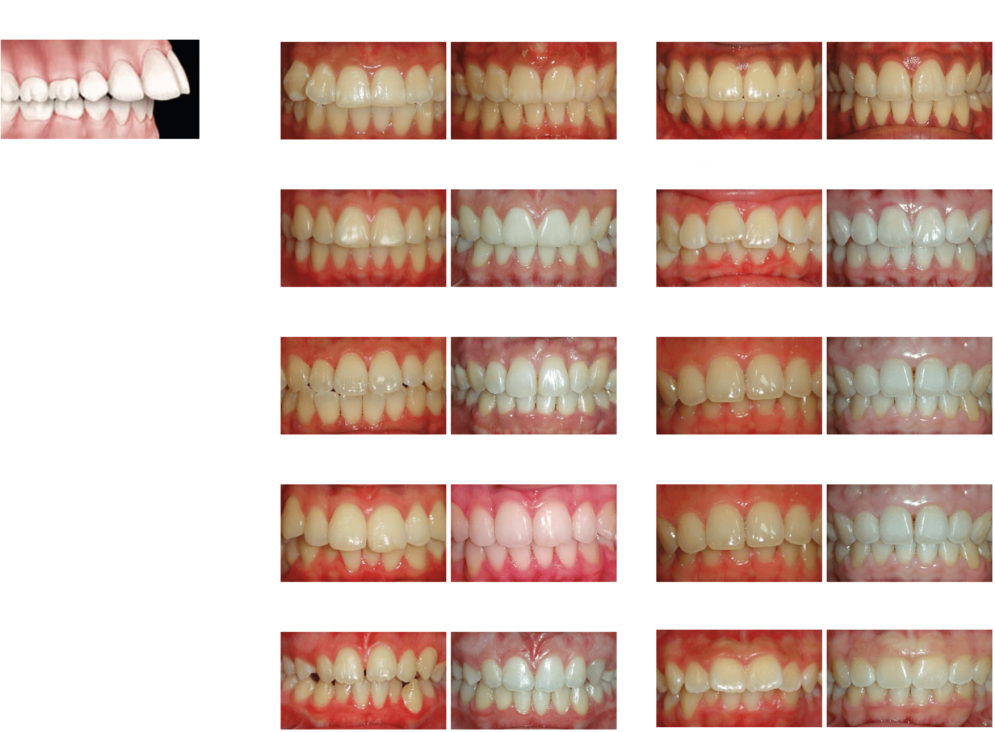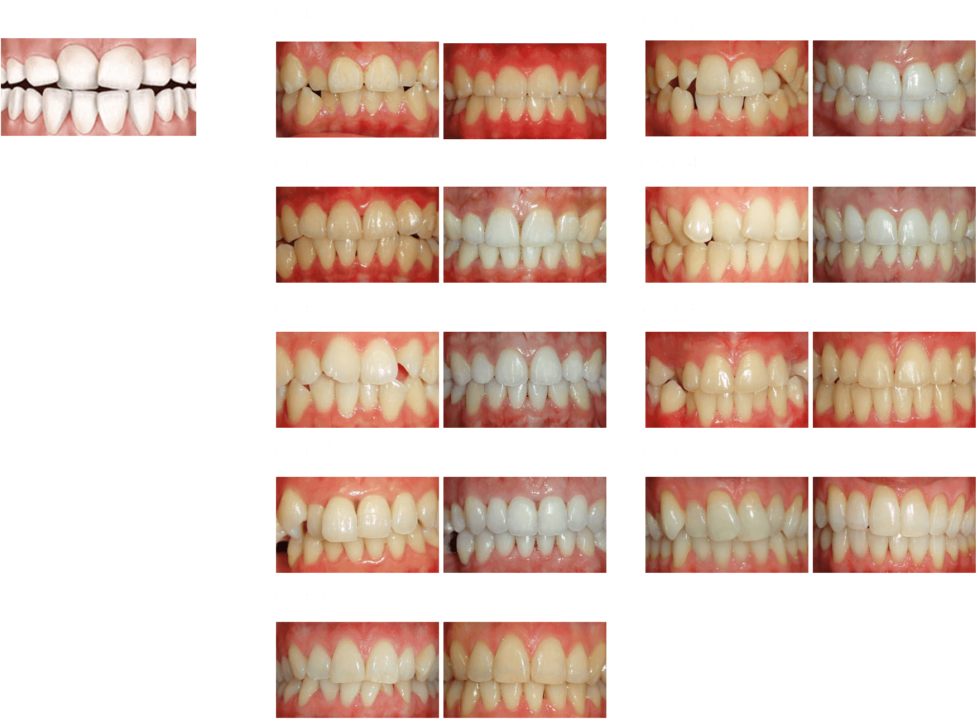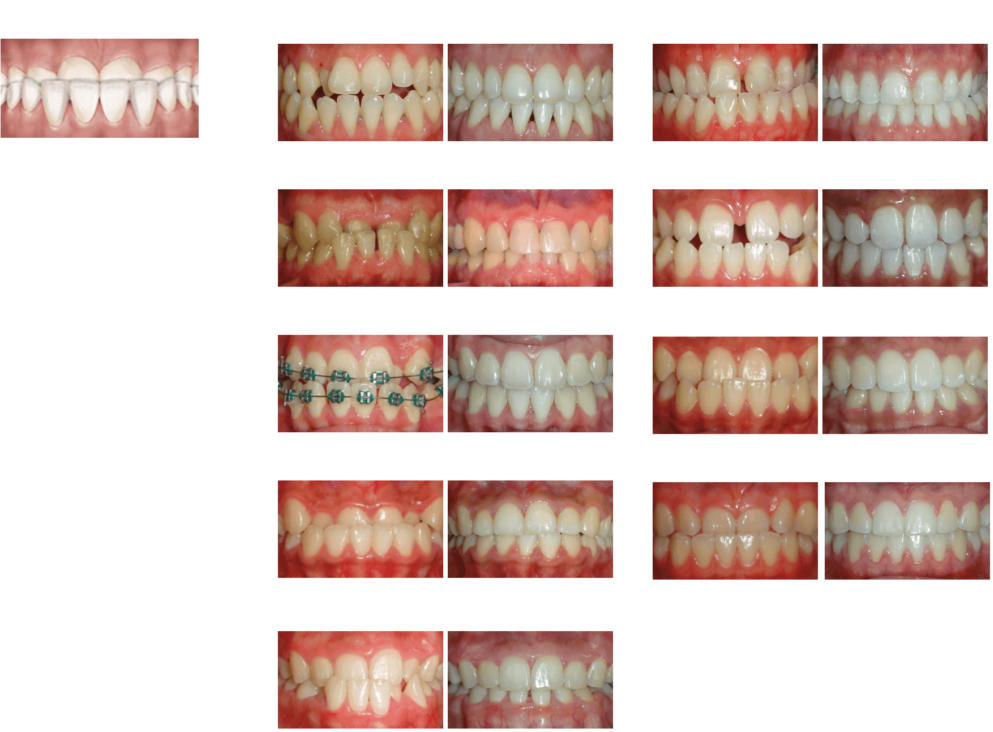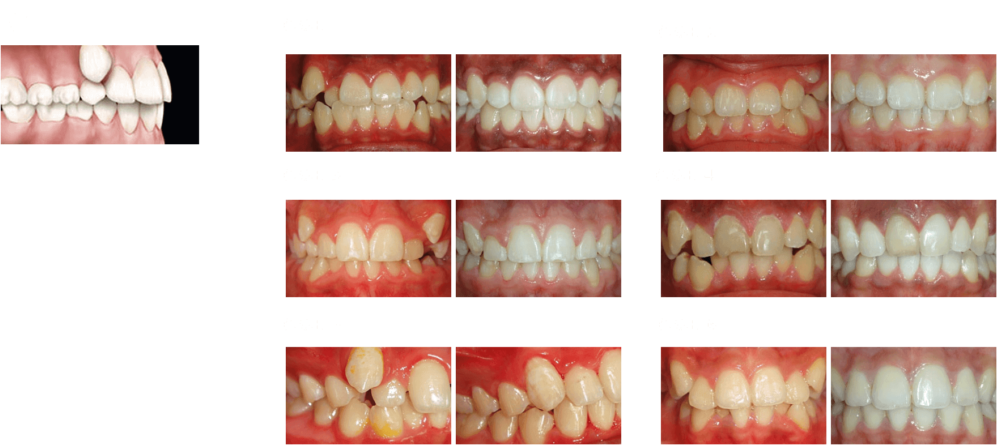
Braces
How can braces change your smile?
Braces can bring about significant changes to your smile by addressing various dental issues and improving the alignment and positioning of your teeth , Whether you are an adult seeking high-quality orthodontic treatment or a parent looking for specialized and gentle orthodontic care for your child, The Dental Design Center Clinic Clinic is here to meet your needs. Our experienced orthodontist team is dedicated to providing professional and superior orthodontic care to our patients.
At Dental Design Center Clinic, we understand that each patient is unique, and we tailor our treatment approach to suit your specific goals and requirements. Our orthodontists stay up-to-date with the latest advancements in orthodontic techniques and technologies to ensure that you receive the most effective and efficient treatment possible.We are committed to delivering exceptional results and providing a positive orthodontic experience for patients of all ages.

Conventional metal braces
Braces can effectively correct crooked or misaligned teeth, close gaps between teeth, and align the bite for improved oral health and aesthetics. By applying controlled pressure to the teeth, braces encourage them to shift into proper alignment over time.
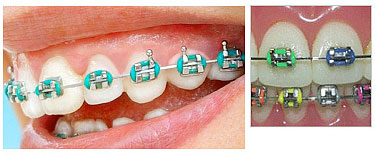
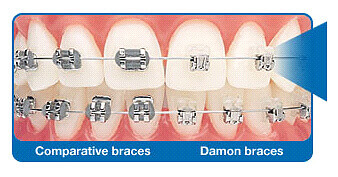
Self-ligating braces, Speed braces or Damon System
Self-ligating braces, Speed braces or Damon System
Braces are a device that is used to straighten teeth, to correct a bite and to correct irregular teeth. Teeth respond to the gentle forces that are applied to them. Modern orthodontists have devised many different types of dental braces to effectively take care of shaky teeth or to align them properly. ceramic braces that use tooth-colored or clear brackets, blending in with the natural color of the teeth. Lingual braces are another option, where the brackets and wires are placed on the back surface of the teeth, making them virtually invisible from the front.
Clear braces
Clear braces, also known as ceramic braces or tooth-colored braces, are a popular alternative to traditional metal braces for orthodontic treatment. They function in a similar way to metal braces but offer a more discreet and aesthetic appearance.
Clear braces are made from ceramic or composite materials that closely match the natural color of the teeth. The brackets, which are attached to the teeth, are transparent or tooth-colored, making them less noticeable compared to traditional metal brackets.
However, ceramic brackets are also more brittle and prone to breakage. In order to deal with this drawback, the manufacturers of these brackets make them thicker to resist the expected breakage.
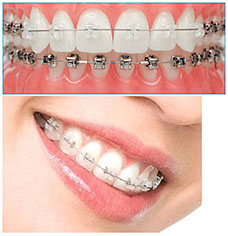
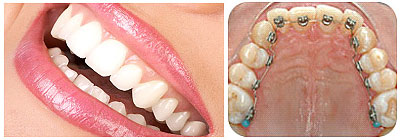
Invisible lingual braces
Lingual braces are fitted behind the teeth. These are expensive though, but compensated for in the fact that they are not visible within casual interactions.
Invisible lingual braces are a type of orthodontic treatment that offers a discreet and nearly invisible option for straightening teeth. Unlike traditional braces that are placed on the front surface of the teeth, lingual braces are placed on the back surface, making them hidden from view when you smile.
Additionally, there is another type of braces that allows for removable appliances, namely Invisalign
When do brecres start ?
Braces, or orthodontic treatment, typically begins during adolescence when most of the permanent teeth have erupted. The exact age at which someone may start braces can vary depending on individual factors and the recommendations of the orthodontist.
children should have an orthodontic consultation by the time they reach age 7, according to the American Association of Orthodontists. If a problem is evident at a younger age, then seek an orthodontic evaluation sooner. This evaluation typically is just for observation and we will continue to monitor progress at no charge. If a problem is evident, taking action early can spare a lot of treatment and expense in the future.
In general, the ideal time to start orthodontic treatment is when the majority of the permanent teeth have come in, which is usually around the ages of 10 to 14. At this stage, the orthodontist can assess the alignment of the teeth, jaw growth, and any potential orthodontic issues.
However, it’s important to note that each person’s orthodontic needs are unique, and there may be cases where early intervention is required before all the permanent teeth have erupted. This can occur if there are significant jaw discrepancies, severe bite problems, or other developmental issues.
The best way to determine when to start braces is to schedule an orthodontic consultation. The orthodontist will evaluate the individual’s oral health, dental alignment, and growth patterns to recommend the appropriate timing for orthodontic treatment.
Parents should seek treatment for their children before age 7 if their child has any of the following:
- Mouth breathing
- Speech problems
- Thumb or finger sucking habits
- Teeth grinding
- Jaws that shift or make sounds
- Crowding, misplaced or blocked out teeth
- Jaws and teeth that are out of proportion to the rest of the face
- Erupted permanent teeth that are crowded or overlap
- Difficulty chewing, obvious abnormal bite development
It is a common misconception that braces are for children and teenagers, but anyone- regardless of age- can benefit from orthodontic treatment, whether it is catching developmental problems early in children or correcting a long-standing bite problem that did not get addressed in younger
Overall, straightening teeth offers both cosmetic and functional benefits, improving oral health, enhancing smile aesthetics, and Smiles play a significant role in our self-image, impacting how we perceive ourselves and how others perceive us. Crooked or misaligned teeth can create a negative first impression and affect our confidence It is best to consult with an orthodontist to determine if orthodontic treatment is appropriate and beneficial for individual dental needs.
Braces offer numerous benefits for individuals seeking orthodontic treatment. Here are some of the key advantages of braces
- Enhanced facial appearances
- Healthier teeth and gums : easier to keep clean, less chance of tooth decay and tooth loss
- Contributes to your self-confidence and your self-image
- Better bite, chew and speak : clearer speech for interviews, public speaking
- Alleviate or prevent physical health problems such as reduce stress, headaches and digestion problem
It’s important to note that the specific benefits of braces may vary depending on individual needs and treatment goals. Consulting with an orthodontist will help determine the most suitable orthodontic treatment and provide personalized insights into the benefits you can expect to achieve through braces.
People of all ages can be good ortho candidates but dentist or orthodontist can determine whether you can benefit from orthodontics. a candidate for braces is someone who has dental issues such as teeth misalignment, excessive gaps between teeth, teeth crowding, or problems interfering with other teeth roots. Getting braces can help improve and align the shape of the teeth, making them smoother and more aesthetically pleasing. Additionally, braces can improve the movement of the associated jawbone, making teeth cleaning easier and reducing the risk of gum disease and tooth decay. If you have any of the following, you may be a candidate for orthodontic treatment.
FACIAL PROFILE PROBLEM
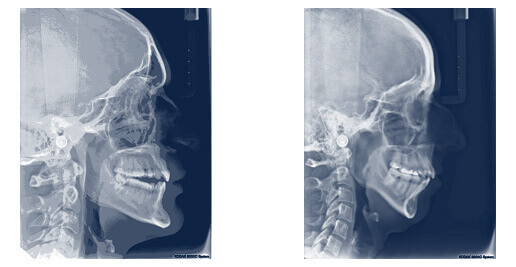
People who have skeletal problems, vertical deformities of the long face and short face types, typically during the early mixed dentition. Orthodontic treatment can indeed have a positive impact on the appearance of your face. By aligning the teeth and improving the overall balance of your bite, orthodontic treatment can enhance your facial aesthetics. Straighter teeth can create a more harmonious smile, which can contribute to a more attractive and confident appearance. Additionally, correcting issues such as overbites or underbites can help improve the symmetry and proportion of your facial features, leading to a more pleasing overall facial appearance.
SPACED TEETH

Spaced teeth, also known as diastema, refer to gaps or spaces between the teeth. These gaps can occur anywhere in the mouth and may vary in size. There can be several causes of spaced teeth, including genetics, abnormal tooth size, missing teeth, or habits such as thumb sucking or tongue thrusting, spacing issues between teeth can lead to gum problems (due to lack of protection by the teeth), periodontal pockets and increased risk of periodontal disease. Sometimes people say they have trouble with biting and chewing correctly. Space problems are most often corrected with braces.
OVERLY CROWDED TEETH
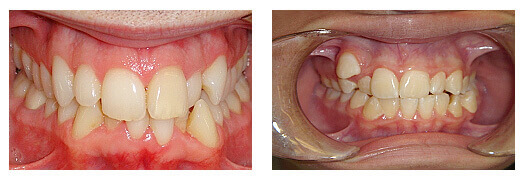
This occurs when there is simply a lack of room within your jaw for all of your teeth to fit normally. Because the dental arch is too small, the teeth move together until there is nowhere left to move but up or down. overly crowded teeth, also known as dental crowding, occur when there is insufficient space in the jaw to accommodate all the teeth properly. This can result in the teeth being misaligned, rotated, or overlapping each other. Dental crowding can be caused by various factors, including genetics, small jaw size, retained baby teeth, or early loss of permanent teeth. orthodontic treatment is often recommended for individuals with overly crowded teeth. Braces or other orthodontic appliances can gradually reposition the teeth, creating space and aligning them properly. In some cases, tooth extraction may be necessary to alleviate severe crowding and create sufficient space for the remaining teeth.
CROSSED BITE

Crossbite is a dental condition in which the upper teeth are misaligned with the lower teeth,This occurs when the upper and lower jaws are both misaligned. resulting in an abnormal bite relationship. In an anterior crossbite, one or more of the upper front teeth may sit behind the lower front teeth when biting down. This can affect the appearance of the smile and may lead to issues with the alignment and function of the jaw.This can lead to abnormal tooth wear and chipping
UNDERBITE
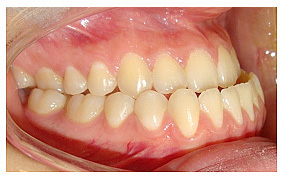
This occurs when the lower teeth protrude past the front teeth. It’s usually caused by undergrowth of the upper jaw, overgrowth of the lower jaw, or both. Having an underbite can affect the appearance of the face and smile, as well as cause functional issues such as difficulty with biting, Orthodontic treatment is often recommended to correct an underbite. The specific treatment approach will depend on the severity of the underbite and the individual’s age and dental condition. In mild cases, braces or clear aligners may be used to gradually shift the teeth into proper alignment.
OVERBITE

An overbite is a dental condition where the upper front teeth overlap significantly with the lower front teeth when the jaw is closed. Having an overbite can affect both the appearance and functionality of the teeth and jaw. In terms of appearance, an excessive overbite may make the upper front teeth appear too prominent, leading to an imbalanced smile. It can cause issues such as difficulty in biting and chewing, increased risk of dental trauma, and uneven wear on the teeth. Orthodontic treatment is often recommended to correct an overbite.
ORTHODONTIC TREATMENT IN CONJUNCTION WITH OTHER DISCIPLINES OF DENTISTRY

Orthodontic treatment can often be combined with other disciplines of dentistry to achieve comprehensive and optimal results for patients. Collaboration between orthodontists and other dental specialists allows for a multidisciplinary approach to address various dental issues and provide the best possible outcome. This team effort allows potential pitfalls confusion eliminated resulting in a well-coordinated treatment effort.
Taking care of your braces is not as complicated as it seems. taking proper care of braces is essential to ensure the success of orthodontic treatment and maintain good oral health. Here are some tips for caring for braces:
Oral Hygiene
Maintain a strict oral hygiene routine by brushing your teeth after every meal and flossing daily. Use a soft-bristle toothbrush and fluoride toothpaste to clean your teeth and braces thoroughly. Pay extra attention to cleaning around the brackets, wires, and gumline.
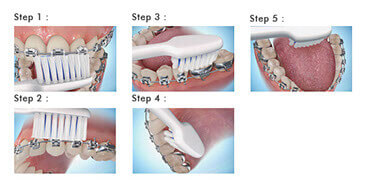
- Clean your braces by using your toothbrush at a 45-degree angle to reach around the wires and pins. Start from the top of each wire and brush downwards, then repeat from the bottom. Take your time to ensure all plaque and debris are removed, working around all your upper and lower teeth.
- Brush your teeth individually by placing your toothbrush at a 45-degree angle where the tooth meets the gum line. Apply gentle pressure and use a circular motion for about 10 seconds on each tooth. Use the same technique on all outer and inner tooth surfaces, adjusting the brush angle as needed for the smaller front teeth.
- Floss once a day using super floss, a specialized floss designed for cleaning around braces and appliances. If you’re unsure how to use it, ask your dental professional for a demonstration or follow the instructions on the product package.
- Rinse your mouth thoroughly with water or mouth rinse, and examine your teeth and braces in the mirror. Ensure they are clean, shiny, and free from any debris.
Following these steps will help keep your braces clean and maintain good oral hygiene. Remember to brush and floss diligently to achieve the best results and maintain a healthy smile
Frequency of Brushing
It is recommended to brush your teeth and braces after every meal and snack, as well as in the morning and before bed. This ensures that any food particles or plaque buildup are effectively removed. Brushing frequently helps maintain good oral hygiene and prevents the accumulation of bacteria that can lead to dental issues. Additionally, make sure to use a soft-bristled toothbrush and fluoride toothpaste for optimal cleaning.
- Flossing: Use special orthodontic floss threaders or floss designed for braces to clean between the teeth and under the wires. This helps remove plaque and food particles that can get trapped in hard-to-reach areas.
- Thread the floss: If you’re using regular floss, thread it carefully under the main wire of your braces. You can use a floss threader to make this process easier.
- Gently slide the floss: Once the floss is under the wire, gently slide it up and down between two teeth. Be cautious not to snap the floss, which can cause discomfort or damage to your braces.
- Clean the sides: Curve the floss around each tooth, and make sure to clean the sides of both the upper and lower teeth. Move the floss in a gentle back-and-forth motion to remove any plaque or debris.
Remember, flossing may take a bit more time and effort with braces, but it is crucial for maintaining good oral health and preventing issues like gum disease or tooth decay. If you need assistance or have any questions about proper flossing technique, consult your orthodontist or dental professional.
A BRACES FRIENDLY DIET
A braces-friendly diet consists of foods that are soft, non-sticky, and easy to chew, minimizing the risk of damaging your braces or causing discomfort. Here are some recommended foods for individuals with braces
- Soft fruits: Bananas, berries, melons, and sliced soft fruits are gentle on braces and easy to chew.
- Cooked vegetables: Steamed or boiled vegetables like carrots, broccoli, and cauliflower are soft and braces-friendly.
- Soft grains: Cooked rice, pasta, and soft bread without hard crusts are safe options.
- Soft meats: Tender cuts of cooked chicken, turkey, or fish are braces-friendly protein sources.
- Dairy products: Soft cheese, yogurt, milkshakes, and pudding are excellent choices for those with braces.
- Soups and stews: Enjoying well-cooked soups and stews can provide nutrition while being gentle on your braces.
- Soft desserts: Opt for soft treats like ice cream, gelatin, smoothies, and soft cakes or muffins.
“RETAINER”
Retainers play a crucial role in maintaining your smile after well done! You have successfully completed the active phase of your orthodontic treatment.
- Remove your retainer when eating: Take out your retainer before eating to avoid damaging it or getting food stuck in it. Place it in its protective case to keep it clean and safe.
- Clean your retainer properly: Clean your retainer regularly to prevent the buildup of bacteria and plaque. Brush it gently using a soft toothbrush and mild soap or non-alcoholic mouthwash. Avoid using toothpaste, as it may be too abrasive. Rinse it thoroughly with water before placing it back in your mouth.
- Handle your retainer with care: When handling your retainer, be gentle to avoid bending or breaking it. Avoid exposing it to heat or hot water, as this can distort its shape.
- Keep your retainer safe: Always store your retainer in its protective case when not in use. Avoid placing it in tissues, napkins, or pockets, as it’s easy to misplace or accidentally throw away.
- Attend follow-up appointments: Regularly visit your orthodontist for check-ups to ensure your retainer fits properly and to address any concerns or adjustments that may be needed.
Remember, wearing your retainer as instructed is essential to maintain the alignment of your teeth and preserve your newly achieved smile. If you have any questions or concerns about your retainer or its maintenance, consult your orthodontist for guidance.


Case Examples:
